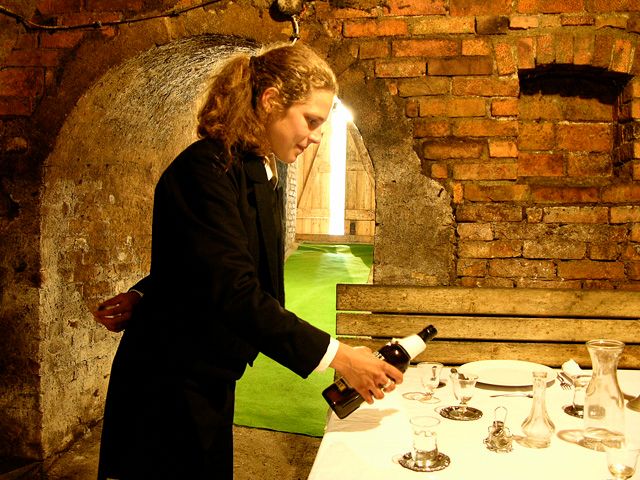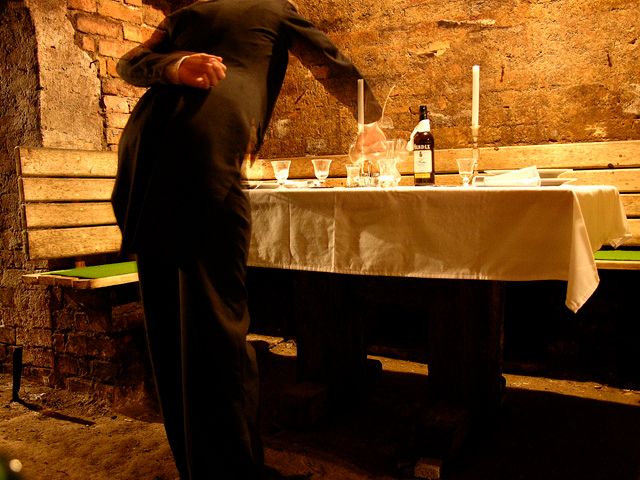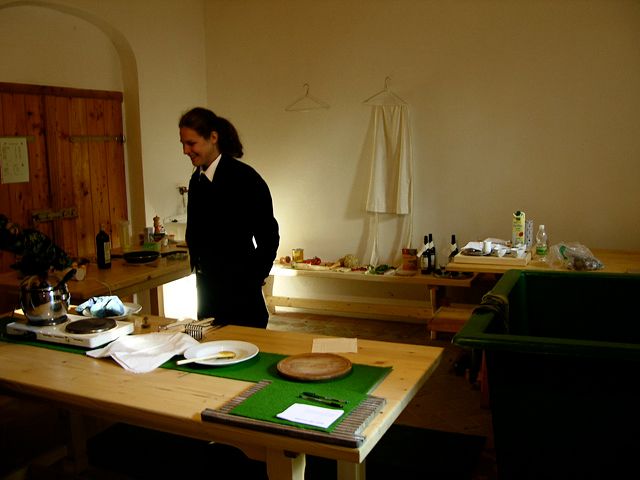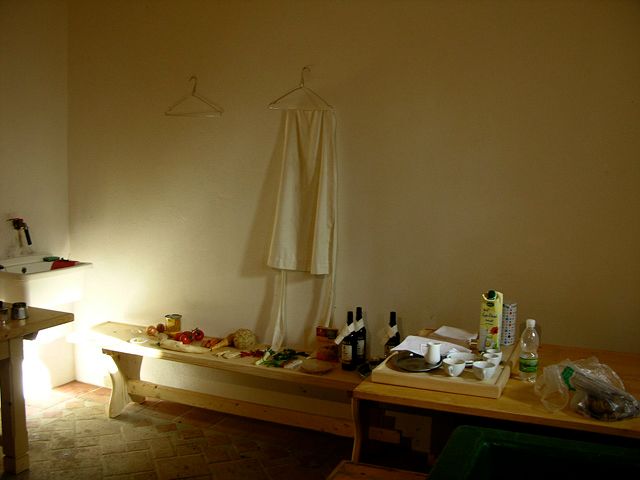We All Have Motives
BackArtists
- With
Information
Nine artists from Linz (students of experimental visual design at the Kunstuniversität Linz) and four artists from Vienna (Institute for Art and Design at Vienna University of Technology/architectecture department) developed site-specific works for the Unterstinkenbrunn cellars. After a number of visits of varying length concepts were drawn up for all of the works: they addressed the shift in image and economic situation — in Unterstinkenbrunn, which is known for its cellars, there has been a recent shift away from wine in favour of onions, which are far easier to cultivate and harvest — and took anecdotes and legends specific to the location as their point of departure, or the cellars' particular acoustic and spatial qualities.
The artists and groups of artists used both the vaulted cellaring as well the antechambers and other rooms (originally used for wine production but now used recreationally) as well as the conurbation itself as their point of departure in developing and locating multimedia installative works. The title Wir Haben Alle Ein Motiv (We All Have a Motive/Motif) plays on the (German) ambiguity of motive/motif, addressing the artists' motif but also people's motivation in participating in or visiting the event, the economic motives behind the change from wine-growing to onion-growing, as well as possible criminal motives in everyday and economic contexts that also occur in rural areas.
Contributors
- Kuration
Contributions
Stroem
"To arrive somewhere else one has to run at least twice as fast!" Projected video images were altered by the movements of the visitors in an interactive installation by Florian Gruber, Nikolaus Hartmann, Thomas Lorenz, Christina Simmel. Sensors and a microphone station were provided for users to attempt to render visible in the installation the video footage and images shot in Unterstinkenbrunn, which was concealed behind, or beneath, abstract images and interference. "A person with a watch knows what time it is. A person with two watches can never be sure."
Verena Henetmayr
Verena Henetmayr raffled a series of four exclusive dinners over the duration of the show in a specially equipped wine cellar. She cooked, served and also slipped into the role of a famous person chosen by the winner on their entry slip at the opening to the event. This Dinner for One was a private event.
Aranka Jell
In the video by Aranka Jell residents of Unterstinkenbrunn tell amusing and interesting stories about the village and from their lives. With her work Jell attempted to link commonplace tales (legends, local myths, anecdotes) with personal stories and rumours.
Sabrina Kern, Kristina Kornmüller
Sabrina Kern and Kristina Kornmüller engaged with three special locations in Unterstinkenbrunn that they noticed during their two visits, and the people associated with these places — the ostensibly 'weird' places and the ostensibly 'strange' villagers. During these two visits they held conversations that they then worked into a very reduced sound installation
Evelyn Kuntscher
In the work by Evelyn Kuntscher an imaginary underground station was erected. By means of acoustic and individually positioned visual stimulation the 'tunnel-shaped' wine cellar became a transit space commuting between the remote village and large towns. Topics like locality, seclusion, infrastructure measures or commuter's lives are reflected: why doesn't Unterstinkenbrunn have a rail link? Why isn't it necessary to be on the rail grid anymore? Why is Switzerland the only country planning an interregional underground network? Evelyn Kuntscher selected a cellar with an open end. Is that where the underground line starts?
Helmut Küblböck
Helmut Küblböck pans a camera through the cellars of Unterstinkenbrunn: the camera hovers through the first wine cellar, down the steps and along the cellars below. The next wine cellar is blended in before end of the the previous one is reached. The result is a voyage through the underground worlds of Unterstinkenbrunn. It is dark in the cellars. There is a light source on the camera that illuminates the space dimly. Wine barrels emerge from the darkness, cast shadows and disappear again.
Johannes Ramsl
“Delete” was an installation about the technical limitations of analogue film. A 16mm film was projected as a loop onto a hobby screen. An irreversible intervention (the film ran through a bath of chemicals) the material on the film was gradually erased (both image and sound tracks). What remained was merely the transparent layer of cellulose. The artist conducted research into films on wine-making. The process of erasing the film was contrasted with the disappearance of the wine from the cellar. Erasing history is a radical and very controversial act.
Manuel Hartmann, Jochen Zeirzer
(notuberlab) installed a fully equipped temporary laboratory (Miramar II) in a wine cellar that led down two stories into the earth, where they examined onions extremely thoroughly for their weaknesses and concealed strengths. Real anatomical, chemical and physics experiments were carried out in the wine cellar, for example testing the possibility of using the onions (in a salt solution) as an iPod recharger. Tears were probably shed.
MIDI Marsch Musik-Kapelle
The Midi Marsch Musik played at the opening, a mobile band producing martial music on the keyboards of computers they brought along with them and playing it back via (battery powered) sound systems carried on their bodies.





